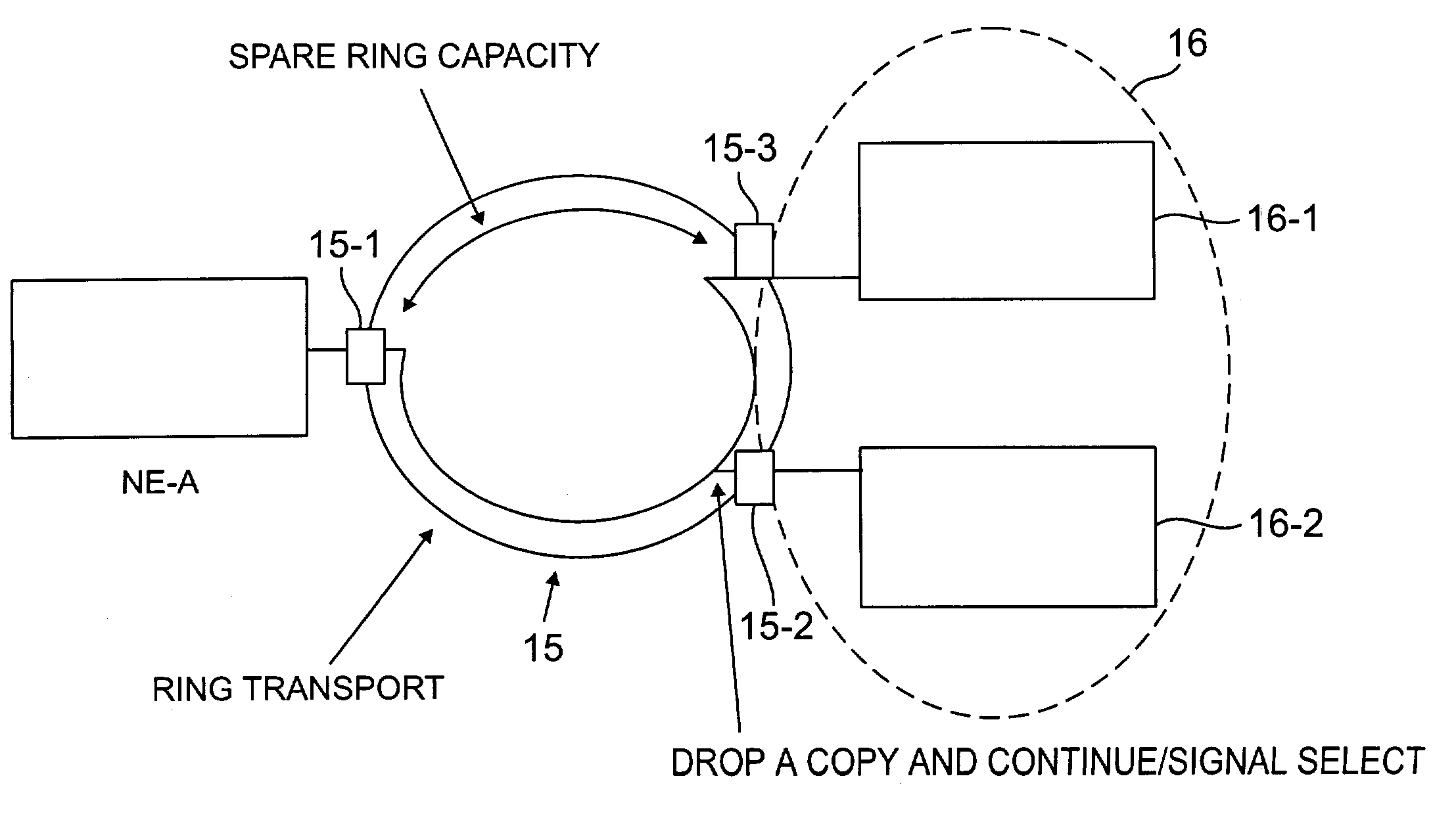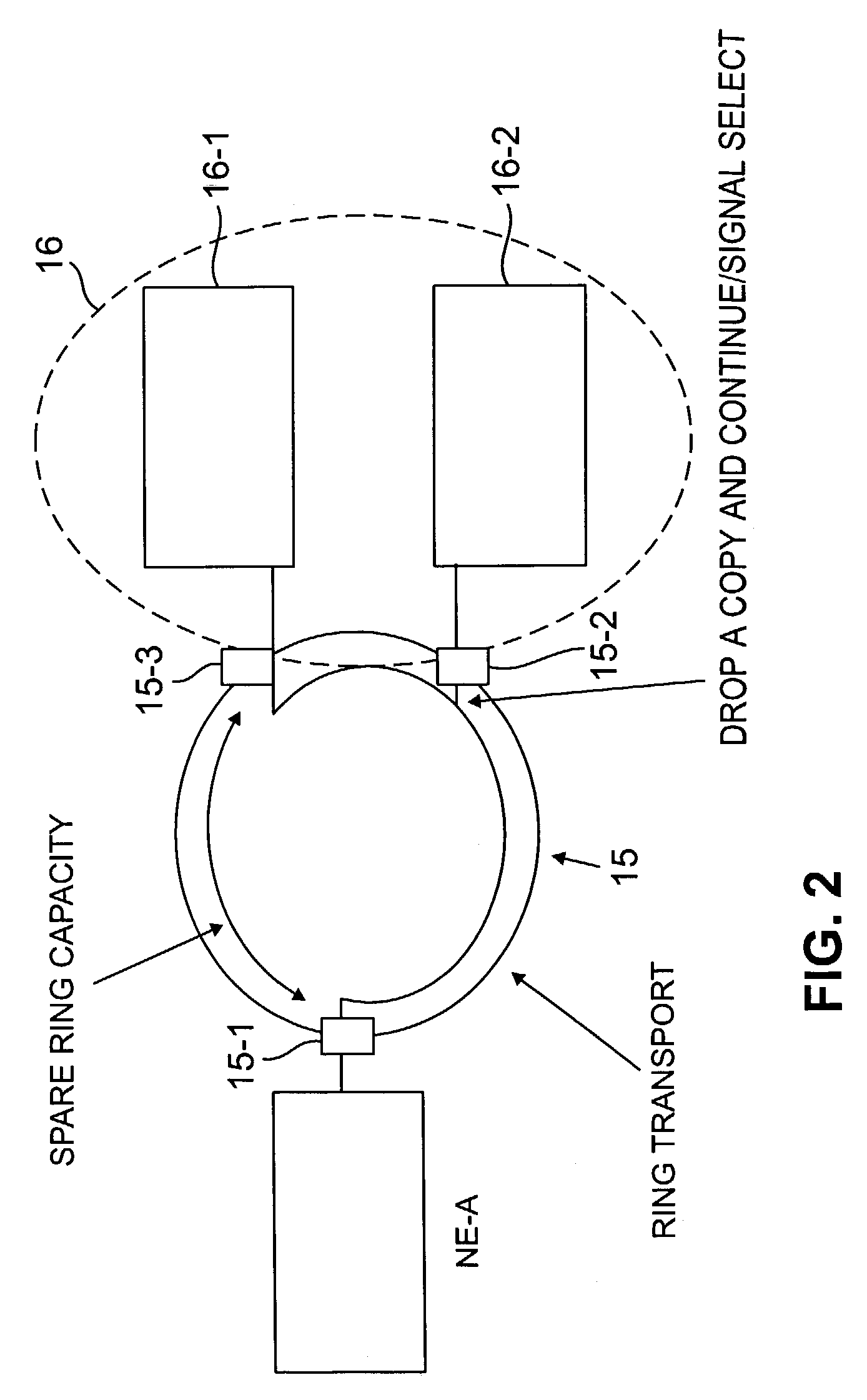Efficient architectures for protection against network failures
a network failure and efficient architecture technology, applied in the field of network failure protection efficiency architectures, can solve the problems of excess network capacity, increased cost, and inability to provide wavelength transformation,
- Summary
- Abstract
- Description
- Claims
- Application Information
AI Technical Summary
Benefits of technology
Problems solved by technology
Method used
Image
Examples
Embodiment Construction
[0027]The invention will be illustrated herein in conjunction with the routing of exemplary traffic demands between network elements, also referred to herein as network nodes. It should be understood, however, that the invention is not limited to use with any particular type of traffic demand, network element or network, but is instead more generally applicable to any network traffic routing situation in which it is desirable to provide improved protection against network failures. For example, the network failure protection techniques of the invention may be utilized not only in optical networks, but also in telephone, cable and other electrical networks. The term “network” as used herein is therefore intended to include, e.g., optical networks, electrical networks and hybrid optical-electrical networks.
[0028]FIG. 2 shows a portion of a network which incorporates an improved dual-homing approach in accordance with an illustrative embodiment of the invention. The portion of the netw...
PUM
 Login to View More
Login to View More Abstract
Description
Claims
Application Information
 Login to View More
Login to View More - R&D Engineer
- R&D Manager
- IP Professional
- Industry Leading Data Capabilities
- Powerful AI technology
- Patent DNA Extraction
Browse by: Latest US Patents, China's latest patents, Technical Efficacy Thesaurus, Application Domain, Technology Topic, Popular Technical Reports.
© 2024 PatSnap. All rights reserved.Legal|Privacy policy|Modern Slavery Act Transparency Statement|Sitemap|About US| Contact US: help@patsnap.com










